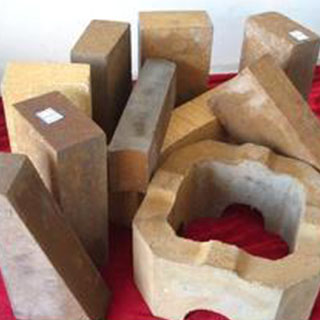The fired refractory brick products need to be selected and tested for physical and chemical properties to identify whether the product meets the expected shape, size, composition and performance requirements.
Appearance selection is to check whether the refractory brick products are deformed, cracked, defective, fire moles, molten holes, raw or over-burned, tolerances, etc. The chemical composition and microstructure of magnesia bricks are mainly determined by chemical analysis, X-ray diffraction analysis, fluorescent X-ray analysis, and petrographic and metallographic analysis. Determination of some physical properties including bulk density, refractoriness, softening temperature under load, porosity, thermal conductivity, resistivity, dielectric constant, linear thermal expansion, thermal shock resistance, water absorption, dielectric loss, dielectric breakdown, mechanical strength , hardness, elastic modulus, etc., all have special testing equipment and standard testing methods. As for the chemical stability of the product in various chemical environments such as acid, alkali, salt, metal, glass and gas, it is often determined and judged by special means or simulation tests according to the different uses of different refractory brick products. Trace non-compliant items from the manufacturing process.

Quality problems with the appearance of refractory bricks:
1) For raw firing or over firing, the method of kiln installation, firing temperature and holding time should be traced back;
2) Looseness, the sintering quality of the raw materials, the quality of the formed body, the gradation of the mud particles, the firing system, etc. should be traced;
3) If the dimensional tolerance is large, the performance of raw materials, the particle size distribution of mud, the scale of model design, model size, kiln installation method and firing system should be traced;
4) Deformation, the mud material, kiln loading method and firing system should be traced;
5) For cracking, the quality of raw material handling, proportion of ingredients and mud moisture, molding quality, drying quality, firing system, etc. should be traced;
6) For spallation, the particle size distribution of the mud, the moisture content of the mud, and the molding quality should be traced;
7) For missing corners and edges, the dry body quality, model quality and handling quality should be traced back;
8) For the melting hole, the raw material low-melting impurities should be traced, the quality of the raw material purification treatment, and the impurities mixed in the production process;
9) Fire moles should be traced back to the kiln installation method and the thermal conditions of the firing process.
There are problems with the internal indicators of refractory bricks:
1) The chemical composition (primary composition, secondary composition, impurities), mineral composition (type, quantity, crystal size distribution, pore size distribution, liquid phase quantity distribution, etc.) do not meet the expected requirements, the raw material composition should be traced, and whether the proportion of ingredients is appropriate , whether the firing system is reasonable;
2) If the bulk density and porosity are not up to the standard, the quality of the mud, the quality of the green body, the firing system, etc. should be traced;
3) Air permeability, the proportion of ingredients, the quality of the green body, the firing system, etc. should be traced;
4) Strength, such as compressive strength, flexural strength, and impact strength, should be traced back to the quality of the mud, the quality of the green body, and the firing system;
5) Resistance and dielectric strength should be traced back to the properties of raw materials, proportion of ingredients, firing system, etc.;
6) Refractoriness, the properties of raw materials should be traced;
7) The thermal expansion and re-burning line changes should be traced back to the properties of raw materials, proportion of ingredients, properties of mud, properties of green bodies, firing system, etc.;
8) The thermal conductivity should be traced back to the properties of the raw materials, the properties of the green body, and the firing system;
9) Thermal shock resistance, the properties of raw materials, proportion of ingredients, properties of mud, and firing system should be traced;